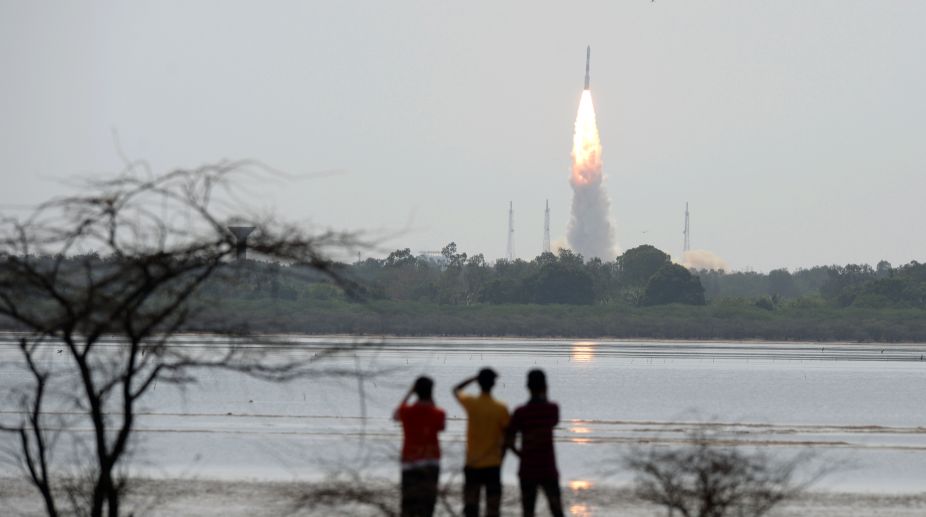Space scientists have made some innovations in the PSLV-C38 mission which would help the Indian Space Research Organisation (ISRO) launch satellites in multiple orbits in a cost effective manner.
Today's launch was not a “regular routine” mission for ISRO as the scientists undertook some innovation in it, Vikram Sarabhai Space Director K Sivan said.
“We have some innovation in this mission. After the satellite separation, PS4 – the fourth upper stage – will be active for 10 more orbits and it is going to provide a very good and very cost effective platform for carrying out very costly experiments”, he said.
Already such experiments were conducted and the desired results obtained, he said, adding, “many such wonders are going to be there.”
ISRO's workhorse rocket, the Polar Satellite Launch Vehicle, in its 40th flight (PSLV-C38), successfully launched the Cartosat-2 series satellite, a dedicated one for the defence forces, along with 30 nano satellites from the Satish Dhawan Space Centre here.
Cartosat-2 is a remote sensing satellite and it is similar in configuration to earlier satellites in the series with the objective of providing high-resolution scene specific spot imagery.
PSLV-C38 Mission Director B Jayakumar said ISRO demonstrated for the third time the restart of PS4 (fourth stage of the rocket) upper stage.
“With that I am sure we will be able to put satellites into multiple orbits as required by the satellite team. This month — June 2017 — is going to be historical month for ISRO as two major launches the GSLV MkIII (on June 5) and PSLV-C38 were accomplished that too in a span of 18 days,” he said.
Sivan said making history was a way of life in ISRO.
“For the last 50 days, starting from May 5, this is the 50th
day. We have launched three major missions, the PSLV, GSLV,
GSLV MkIII, ranging a variety of satellites,” he said.
“Everything happened in a short span of 50 days. All these happened mainly because of the hard work by team ISRO,” he said at the Mission Control Centre.
Satish Dhawan Space Centre (SHAR) Director, Kunhi Krishnan said the successful launch of PSLV-C38 “clearly demonstrated its commendable position as one of the most reliable launch vehicles.”
“With this launch we have completed 61 launch vehicle missions from the spaceport of India, Sriharikota,” he said.
ISRO Satellite Centre Director Mayilsami Annadurai said, “Initial signals are good (received from the Cartosat-2 Series satellite) and two panels are deployed from the satellite.”
“Subsequently, I think, third day from now, we have to enable the payloads and get the initial pictures,” he said.











